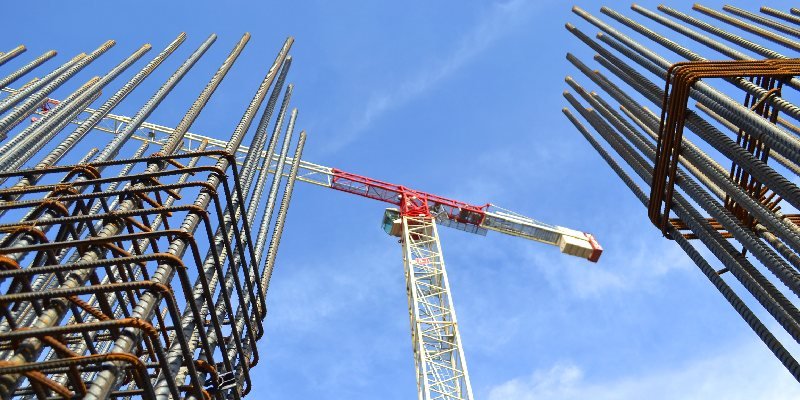Types of Beam in House Construction: Pros and Cons
In the realm of house construction, the selection of the right beam type plays a pivotal role in ensuring structural integrity and safety. Beams are essential for constructing floors, ceilings, roofs, and bridges. This article explores different types of beam in house construction, along with their pros and cons.
What is a Beam?
A beam is a fundamental element in construction, serving as a horizontal structural component. It’s essentially a support system that carries vertical loads, resists sheer forces, and manages moments of rotation. In practical terms, beams are integral in constructing various features such as floors, ceilings, roofs, and bridges.
Considerations When Choosing Beam Types
When selecting the appropriate beam type for a construction project, several factors must be considered:
- Structural Requirements: Evaluate the load-bearing capacity, span length, and structural stability required for the building design.
- Aesthetic Preferences: Consider the architectural style, design elements, and visual appeal of different beam materials.
- Cost-effectiveness: Compare the initial cost, maintenance expenses, and lifecycle costs of various beam options.
Pros and Cons of Beam Materials
Each beam material has its unique advantages and drawbacks, including:
- Strength and Durability: A Steel beam offers exceptional strength, while a wooden beam provides natural beauty. Concrete beam combines strength with fire resistance.
- Maintenance Requirements: A Wooden beam may require periodic treatments to prevent decay, while a steel and concrete beam has minimal maintenance needs.
- Environmental Impact: Consider the ecological footprint of each material, including production processes, resource depletion, and waste generation.
Different types of beam in house construction
When it comes to house construction, several beam types are commonly employed, each with its own set of characteristics and applications.
Let’s delve into some of the most prevalent types of beams in house construction:
Different types of beams in house construction Based on Support
Here are Different types of beams in house construction Based on Support:
Simply Supported Beams
They rest on two supports and allow for horizontal movement. They are versatile and can be used in earthquake-resistant constructions and suspension bridges. Simply supported beams offer simplicity in design and construction, making them suitable for a wide range of applications where flexibility and ease of installation are paramount.
- Pros:
- Versatile in earthquake-resistant constructions
- Allow for horizontal movement
- Cons:
- Limited load-bearing capacity
- Require careful design for stability
Cantilever Beams

They have one end fixed to a structure while the other end remains free. They are commonly used in bridges, bay windows, and balconies, offering excellent structural support and stability. Cantilever beams provide unique design possibilities, allowing for the creation of extended structural elements without the need for additional support.
- Pros:
- Provide additional space and structural support
- Ideal for balconies and bay windows
- Cons:
- Require careful engineering to prevent deflection
- Limited load-bearing capacity at free end
Continuous Beams
They have multiple points of support and are ideal for structures requiring enhanced stability. They are commonly employed in multi-floor buildings and bridges, particularly in earthquake-prone areas. Continuous beams offer increased load-bearing capacity and resilience compared to simply supported beams, making them suitable for large-scale constructions where structural integrity is paramount.
- Pros:
- Enhanced stability with multiple support points
- Ideal for multi-floor buildings
- Cons:
- Complex design and construction process
- Require precise alignment of support points
Fixed-End Beams
They are securely fixed at both ends, offering maximum stability and resistance to movement. They are commonly used in buildings, bridges, and trusses to ensure structural integrity. Fixed-end beams provide unparalleled stability in critical load-bearing applications, preventing any movement or rotation that could compromise the structure’s safety.
- Pros:
- Maximum stability and resistance to movement
- Ideal for heavy-load structures
- Cons:
- Limited flexibility in design
- Requires careful installation and alignment
Overhanging Beams
They extend past their support points, providing additional space and structural support. They are often used in residential and commercial constructions for features such as balconies and roof extensions. Overhanging beams offer architectural versatility, allowing for the creation of extended structural elements that enhance both functionality and aesthetics.
- Pros:
- Create unique architectural features
- Provide additional space without additional support
- Cons:
- Require careful engineering to prevent deflection
- Limited load-bearing capacity at overhanging end
Double Overhanging Beams
They have both ends extending past their support points, offering increased stability and load-bearing capacity. They are utilized in various applications, including enclosed balconies and buildings with glass floors. Double overhanging beams provide robust structural support for extended architectural features, ensuring stability and safety in diverse construction projects.
- Pros:
- Enhanced stability with extended support points
- Ideal for enclosed balconies and glass floors
- Cons:
- Limited load-bearing capacity at free ends
- Require careful engineering to prevent overloading.
Different types of beams in house construction Based on Material
Here are the Different types of beams in house construction Based on Material:
Steel Beams
They are renowned for their strength and durability, making them ideal for large-scale commercial projects. They are resistant to corrosion and can withstand extreme weather conditions, making them suitable for a wide range of applications.
- Pros:
- High strength and durability
- Resistant to corrosion and extreme weather
- Cons:
- High cost of materials and installation
- Require skilled labor for fabrication
Concrete Beams
They are capable of handling heavy loads and powerful stressors, making them ideal for structures requiring substantial support. They are commonly used in bridges, highways, dams, and parking garages.
- Pros:
- High load-bearing capacity
- Suitable for large-scale constructions
- Cons:
- Prone to cracking and deterioration over time
- Require extensive formwork for casting
Timber Beams
They offer versatility and aesthetic appeal, with different wood types offering varying strengths and characteristics. They are commonly used in residential constructions for their natural beauty and structural reliability.
- Pros:
- Natural aesthetic appeal
- Renewable and sustainable material
- Cons:
- Susceptible to rot, decay, and insect damage
- Limited load-bearing capacity compared to steel and concrete
Composite Beams
They combine different materials to enhance strength and rigidity. They are commonly used in large weight-bearing structures, offering a balance of durability and flexibility.
- Pros:
- Enhanced strength and rigidity
- Versatile material combinations
- Cons:
- Higher cost compared to traditional materials
- Require specialized fabrication techniques
Conclusion
We have provided a detailed guide on different types of beams in house construction. The choice of beam type in house construction is a critical decision that impacts structural integrity, aesthetics, and budget. By weighing the pros and cons of a steel, wood, and concrete beam, builders can make informed choices that meet the unique requirements of each project.
FAQs
What factors should I consider when choosing a beam type?
Structural requirements, aesthetic preferences, and cost-effectiveness are key considerations when selecting a beam type.
Is a steel beam more expensive than a wooden beam?
Yes, steel tends to be pricier than wood due to the higher material and fabrication costs.
How long does a concrete beam typically last?
They have a long lifespan and can last for several decades with proper maintenance.
Can I use different types of beams in the same construction project?
Yes, it’s possible to use a combination of steel, wood, and concrete in a single construction project based on structural requirements and design preferences.
Are there any eco-friendly options for a beam?
Sustainable alternatives such as engineered wood products and recycled steel offer environmentally friendly options for house construction.




